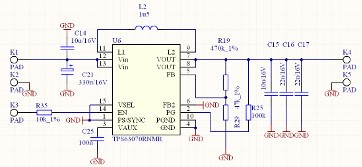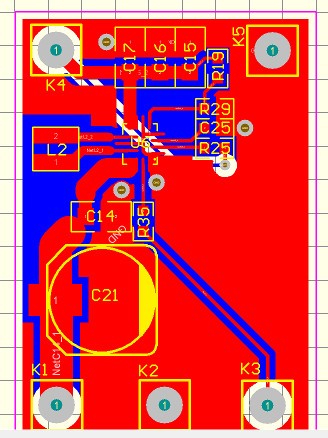Other Parts Discussed in Thread: TPS61087
I have the TPS63070 working as boost converter 5V/9V. The output current is max. 500mA. It works well under normal conditions but it always gets damaged when the output is shorted to ground. When the chip is damaged it draws high supply current without any load (about 450 mA).
As far as I know the TPS63070 is protected against short ciruit but it simpy doesn't work in my application. I tried to find what is causing the problem but I failed. Maybe I do something wrong ?
Also, I noticed it draws almost 40mA of supply current without any load (of course before it is damaged).
C14, C15, C16, C17 - ceramic capacitors; C21 - low ESR type



